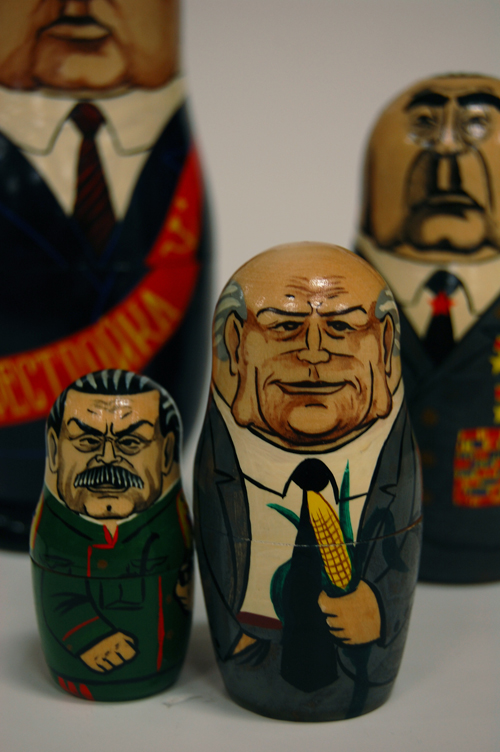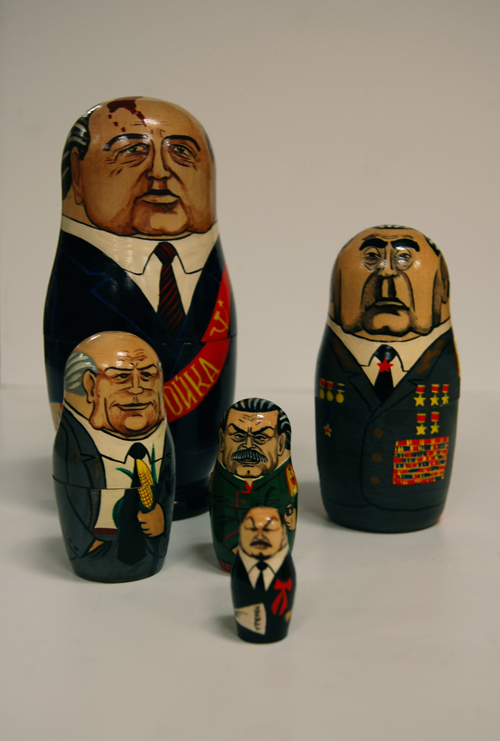Russian nesting dolls (matrioshka) are hand-crafted, hollow wooden dolls of increasing size that fit inside one another. The name originates from the Latin root word mater (mother) and it is generally accepted that the dolls were originally a symbol of motherhood and fertility, with the smaller “children” fitting inside the outside mother doll. While the concept seems to have originated in China, they have been a craft tradition in Russia since the end of the 1800s. The Russian version of the dolls were introduced to the world at the 1900 World Exhibition in Paris and have been symbolic of Russia in the global mindset, and a popular souvenir, ever since.

The form of the nesting doll has been used to market figures from pop culture, including the Beatles and Star Wars characters, and not surprisingly, it has also used the likenesses of political figures. This week’s feature is a distinct cultural form of the matrioshka, depicting the leaders of the Communist Party in the U.S.S.R.

Propaganda was used in virtually every aspect of life in the U.S.S.R. and visual representations of party leaders appeared on all manner of materials. As evidenced from Special Collection’s Leniniana artifacts, heroic likenesses of party leaders were reproduced on posters, plates, sculptures, toys and even embroidered onto looms.

The matrioshka photographed for this blog appears to have been produced in the 1990s, after the collapse of the Soviet Union, and may be taken as a tongue-in-cheek reference to the Communist cult of personality rather than an example of heroic leader imagery. Whatever its context, the style of this matrioshka would not have been out of place among the earlier artifacts in the collection.

For more information or to see more artifacts from the Leniniana Collection, contact asc@ryerson.ca to make an appointment, or drop by our reading room on the 4th floor of the library.
Sources:
DeLaine, Linda. “Matryoshka – Soul of Russia.” Russian Life. N.p. 2007. http://www.russianlife.com/article.cfm?Number=196 . 20 April, 2011.